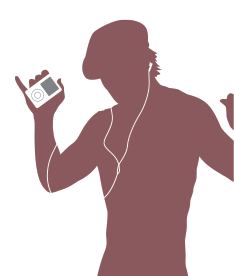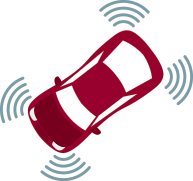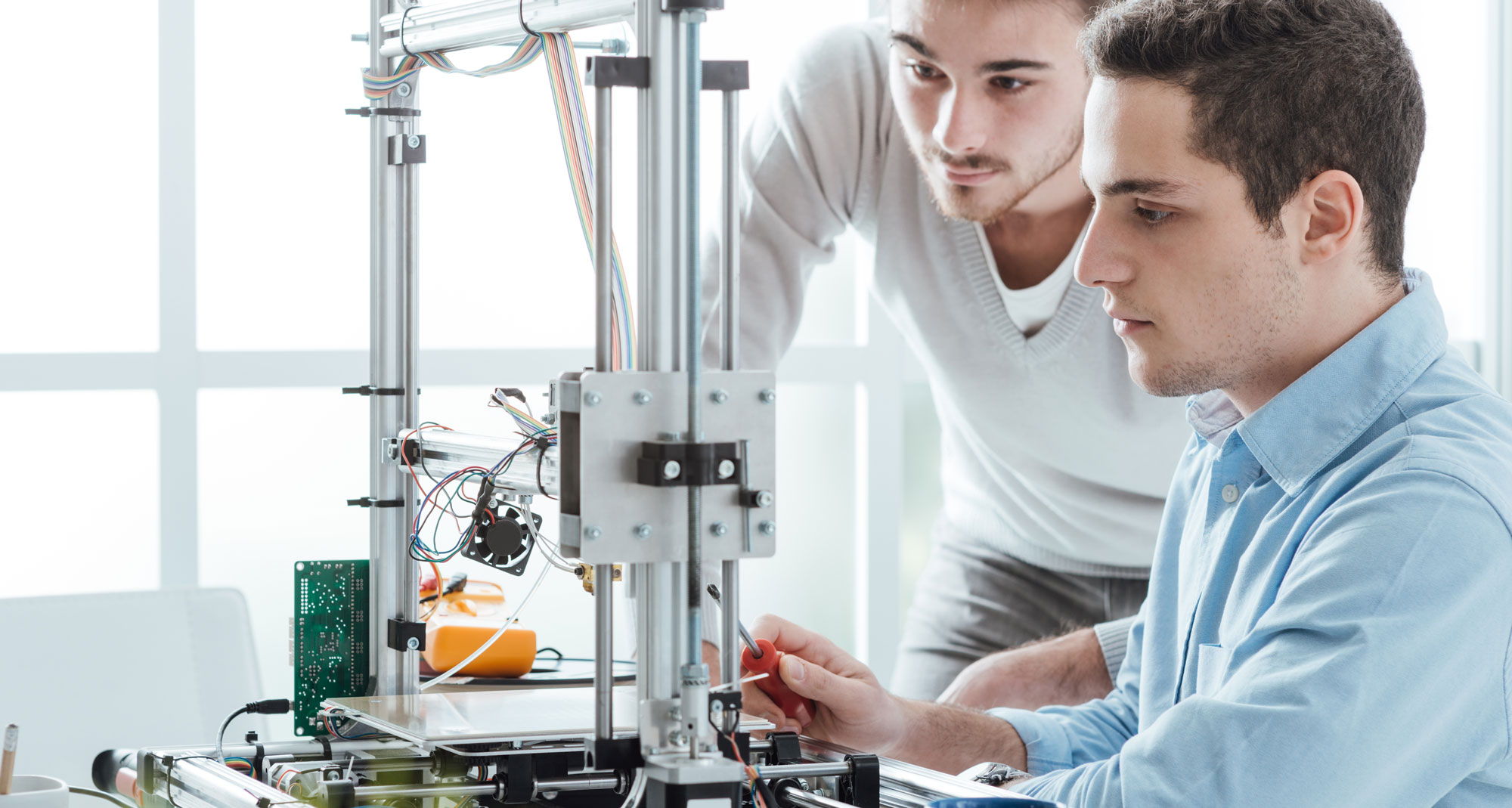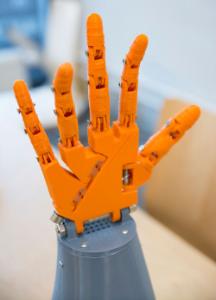
Using Design Thinking to Revolutionize Your Career
What Do Designers Actually Do | Human and Technology Interface | Wearable Technology | Vehicle Design | Virtual Design | Additive Manufacturing
5 Ways Using a Design-Thinking Approach Can Revolutionize Your Career
In a constantly evolving global economy, innovation has become the standard of success. It is not enough to simply solve problems through traditional methods of thinking to distinguish yourself requires anticipating the problems of consumers and presenting solutions above and beyond those of your competitors. Success requires connection on all fronts, from within your team to the furthest reaches of your clientele. Every product you have ever owned, ever used or ever seen has one thing in common. Every product has a designer. The subject of design is not simply an academic pursuit, however. Design is a popular subject in the everyday world as well.
Design-Thinking Approaches
EMPATHY
The groundwork of human-centered design lies in the ability to connect to consumers. Everything from designing a cereal box to creating policy documents exists to solve consumer problems. That design begins with creating an in-depth understanding of your consumer.
The essential characteristic of generating empathy in your design begins with asking the right questions. Shift your line of inquiry from "How can we generate more profits?" to an approach that focuses on the concerns of consumers. Ask instead "How can I fill a gap in the market?" or "What is it that my customers gain most from my service?>" Match these human-centered questions to your analysis of target markets. For example, if you are a car company and your metrics reflect that many of your consumers are families, ask "How can I create a car that provides safer, more comfortable transport for children?." Understanding your consumer basis and creating empathy for their interests will set you apart from competitors by helping you deliver products that directly solve the concerns of your users. Start by asking the right questions, and your design will reflect your consumer.
FEEDBACK
If consumer connection is the heart of human centered design, then feedback is its lifeblood. Many companies still treat feedback as a luxury, neglecting its essential characteristic as a developing force in design thinking. In the past, feedback has fallen at the wayside in favor of allocating time to constant outbound marketing. With user-centered design, the emphasis on feedback helps develop products more efficiently by incorporating direct responses from consumers.
Begin with creating a minimum viable prototype. Most consumers feel more comfortable assessing a prototype than an established product, and are more open to offering an honest response. Online forms and reward systems offer quick and easy methods for gathering feedback, while personal interviews and product testing allow for more personal and in-depth assessment. Whichever method you choose for your design, feedback helps you create products that are more efficient for your company and more comprehensive for your client.
COLLABORATION
The third facet of human-centered design opens to include your designers themselves. Traditional markets place an emphasis on internal competition, on the concept that promoting an individual idea is the best method of generating personal profit. While individual ideas remain valued, design thinking expands that value to include developing the idea as a collective. It shifts the focus from "my" to "ours," and promotes collaboration to engender innovation. Although an individual idea can be strong, it can always become stronger through development as a group. Collective innovation offers new perspectives that broaden an idea, and helps solve problems more efficiently and creatively.
PERSISTENCE
At the core of design thinking lies innovation. It is what allows you to overcome failure by reinventing your design, and ultimately teaches how to optimize setbacks to create a better product. Failure is, in itself, feedback in a more unwelcome form. It is the market's response offering you an opportunity to create something of deeper understanding, an opportunity to use design thinking to solve problems that haven't presented themselves before. User-centered design allows you to persist through failure, and lays the groundwork for reinventing your product to its leading form.
In today's competitive economy, revolutionizing your career through human-centered design is essential to distinguishing your work. As design professor Kate Canales affirmed, the design revolution begins with education and will expand to reinvent all fields with a new focus on human centered design.
WHAT IS IT THAT DESIGNERS ACTUALLY DO?
 The truth is there are many types of design professionals, from fashion designers to computer programmers. The traditional work of a mechanical engineer is to design a product to meet given requirements. Previous markets placed an emphasis on design that looked good, a method that proves commonplace today. While initial product attraction still holds sway and technical functionality is still imperative, it is an emphasis on human connection that sets innovators apart. Human-centered design revolutionizes a stagnating market, and provides a framework of thought that can be applied to problems across all spectrums of creation. Let's find out .
The truth is there are many types of design professionals, from fashion designers to computer programmers. The traditional work of a mechanical engineer is to design a product to meet given requirements. Previous markets placed an emphasis on design that looked good, a method that proves commonplace today. While initial product attraction still holds sway and technical functionality is still imperative, it is an emphasis on human connection that sets innovators apart. Human-centered design revolutionizes a stagnating market, and provides a framework of thought that can be applied to problems across all spectrums of creation. Let's find out .
OBJECTS WILL BE USED IN MANY DIFFERENT WAYS AND EVERY OBJECT MUST MEET DIFFERENT CRITERIA:
 SOME OBJECTS MUST PERFORM A GIVEN FUNCTION EFFICIENTLY.
SOME OBJECTS MUST PERFORM A GIVEN FUNCTION EFFICIENTLY.
Designers working in this realm require solid engineering skills.
 OTHER OBJECTS MUST BE EASY FOR PEOPLE TO USE.
OTHER OBJECTS MUST BE EASY FOR PEOPLE TO USE.
Designers who hope to succeed must understand human psychology and a solid grasp of human anatomy. As the population in the United States ages, objects that accommodate people with different ability levels will become more important.
 THE SOLE FUNCTION OF SOME OBJECTS IS TO BE BEAUTIFUL.
THE SOLE FUNCTION OF SOME OBJECTS IS TO BE BEAUTIFUL.
Aesthetics are a concern with the design of most objects. For some objects, looking functional brings a beauty on its own. For artistic designs, beauty is the primary consideration.
 OBJECTS MUST BE EFFICIENT TO MANUFACTURE.
OBJECTS MUST BE EFFICIENT TO MANUFACTURE.
 Throughout history, there have been many objects that meet the first three criteria, but fail at this aspect. If an object is difficult or costly to manufacture, its appeal will be limited to wealthy customers.
Throughout history, there have been many objects that meet the first three criteria, but fail at this aspect. If an object is difficult or costly to manufacture, its appeal will be limited to wealthy customers.
None of these requirements exists in a vacuum; they are all subject to other constraints such as cost, complexity or practicality. The most well-designed, most memorable objects combine all of these aspects. Few devices reach this rarefied status.
THE APPLE iPOD IS ONE SUCH ITEM.
So what is user centered design?

With This In Mind, Consider These Five Areas Of Human Centered Design:
1. Human and Technology Interface
 . For many years, the complexity of integrating mechanical, electronic and computer-directed systems has grown greater at the systems themselves have become more complex and powerful. Today, many systems are moving in the opposite direction. The levers, gears, switches and keyboards that we once used to operate our devices are steadily being replaced by touchscreen interfaces. Voice-driven interfaces are becoming more important as well. However, this can actually make systems more difficult to manage.
. For many years, the complexity of integrating mechanical, electronic and computer-directed systems has grown greater at the systems themselves have become more complex and powerful. Today, many systems are moving in the opposite direction. The levers, gears, switches and keyboards that we once used to operate our devices are steadily being replaced by touchscreen interfaces. Voice-driven interfaces are becoming more important as well. However, this can actually make systems more difficult to manage.
Improving technology can make our devices more observant and responsive. It is now within our grasp to build devices that closely monitor their human users for input and instructions, much the way that a dog or horse accepts instructions from its human master. Humans do not simply direct their animals; a dog or a horse must take commands and determine how to accomplish the desired task. In the same way, the machines of tomorrow will find their own ways to complete the jobs assigned to them.
Machines that can operate in this manner will not only be simpler and easier to use, they will also empower people with disabilities and make the world a better place for everyone.
2. Designing Wearable Technology
 From fitness trackers to head mounted displays, wearable technology has a particularly intimate relationship to humans. This makes the design of these objects particularly important. No matter how well the device functions, if it is uncomfortable or awkward to wear, it is almost certainly doomed to failure.
From fitness trackers to head mounted displays, wearable technology has a particularly intimate relationship to humans. This makes the design of these objects particularly important. No matter how well the device functions, if it is uncomfortable or awkward to wear, it is almost certainly doomed to failure.
To succeed in this field, devices must be functional, lightweight, easy to use and attractive to look at. This offers unique opportunities for fashion and technical designers to work together because the steps to designing wearable technology falls in both areas. Designers with the skills and education to work comfortably in both worlds could be an especially high demand.

3. Designing Vehicles
 Driverless vehicles give design engineers the opportunity to rethink the relationship between people and vehicles. For all of history, all types of transportation had to accommodate one or more humans to control the vehicle. Any considerations of comfort, convenience, functionality and passenger capacity were forced to take second place to the practical concerns of monitoring and operating the vehicle and its subsystems.
Driverless vehicles give design engineers the opportunity to rethink the relationship between people and vehicles. For all of history, all types of transportation had to accommodate one or more humans to control the vehicle. Any considerations of comfort, convenience, functionality and passenger capacity were forced to take second place to the practical concerns of monitoring and operating the vehicle and its subsystems.
Now, full-time drivers are becoming an optional feature in many vehicles. What could the driverless vehicles of tomorrow look like? What will passengers of tomorrow want in their vehicles? This is an exciting time in the history of transportation. The design engineers of today will be wrestling with these questions for years to come.
This is not a field for fainthearted designers. Engineers working in this field will struggle to overcome the inertia of tradition. Many forward-thinking designs will fail through no fault of their designers. In the end, there could well be an entirely new class of vehicles.
4. Designing for the Virtual World
-78x95.png) Objects and spaces that exist solely in virtual reality are not subject to physical constraints. However, they are still subject to human constraints. There are boundaries to human perception, and they are not infinitely flexible.
Objects and spaces that exist solely in virtual reality are not subject to physical constraints. However, they are still subject to human constraints. There are boundaries to human perception, and they are not infinitely flexible.
This field could be particularly challenging for many design engineers. In most fields of design, creativity has always been limited by the physical nature of our world. In the virtual world, many of these limitations do not exist. This allows engineers the freedom to stretch their creativity as far as they dare. Unfortunately, unbounded creativity and freedom may lead to designs that are too far outside the realm of normality to be accepted.
Successful engineers in this field will require a solid background in physical and computer-based design as well as in psychology to understand how the human mind perceives reality. Gaining these skills will not be easy, and it will take time. However, engineers that master these fields can find themselves designing and exploring an entirely new world.

5. Additive 3D Manufacturing
 Three-dimensional printing can significantly streamline the process of building complex, unique objects. Devices that would once require multiple castings or complex milling operations to create can now be made in a single operation. Making changes to designs becomes as easy as changing a few parameters on a computer and hitting the print button.
Three-dimensional printing can significantly streamline the process of building complex, unique objects. Devices that would once require multiple castings or complex milling operations to create can now be made in a single operation. Making changes to designs becomes as easy as changing a few parameters on a computer and hitting the print button.
Three-dimensional printing is not just for rapid prototyping. This innovative manufacturing technology is suitable for building complex devices of all shapes and sizes. Teams of designers and engineers around the world are using this technology to build everything from prosthetic limbs to houses.
One of the primary attractions of additive manufacturing is the ability to offer mass customization. Engineers who work in this medium will interact closely with customers to give them exactly what they want. More than ever before, this will require designers to have a combination of artistic, technical and communication skills to succeed.
WHAT DOES A DESIGN ENGINEER DO?
 There is no simple answer to this question. One thing is certain; new technologies and changing expectations make this an exciting time to be a design engineer. However, it will take more than artistic skills and creativity to succeed in this field. The successful designer of tomorrow will be part artist, part engineer, part politician and part psychologist.
There is no simple answer to this question. One thing is certain; new technologies and changing expectations make this an exciting time to be a design engineer. However, it will take more than artistic skills and creativity to succeed in this field. The successful designer of tomorrow will be part artist, part engineer, part politician and part psychologist.


 Give to Florida Tech
Give to Florida Tech